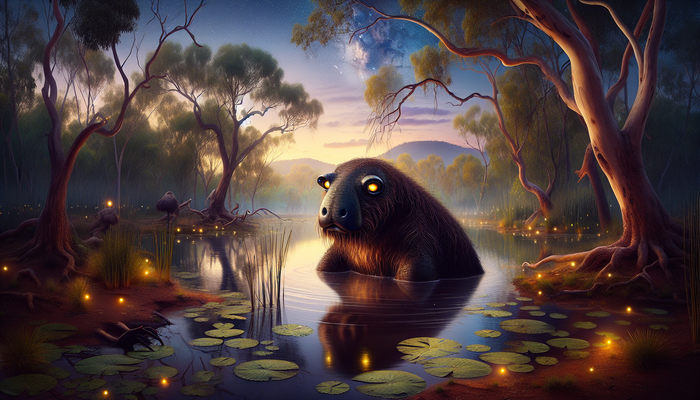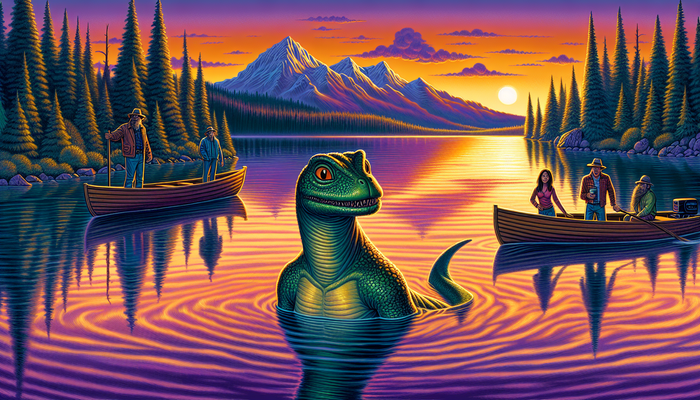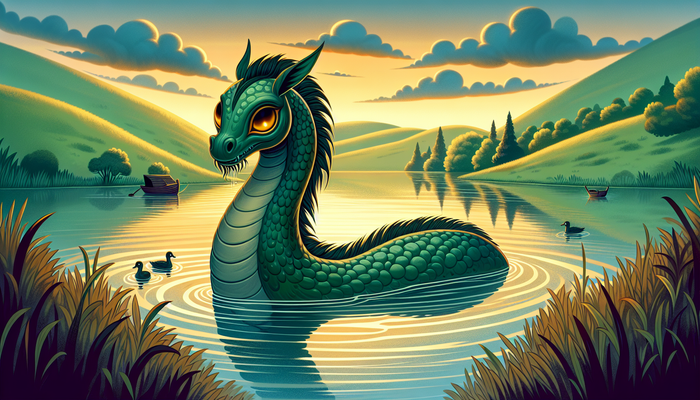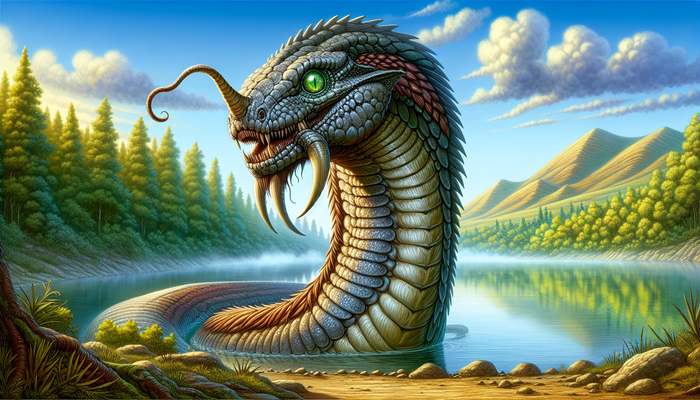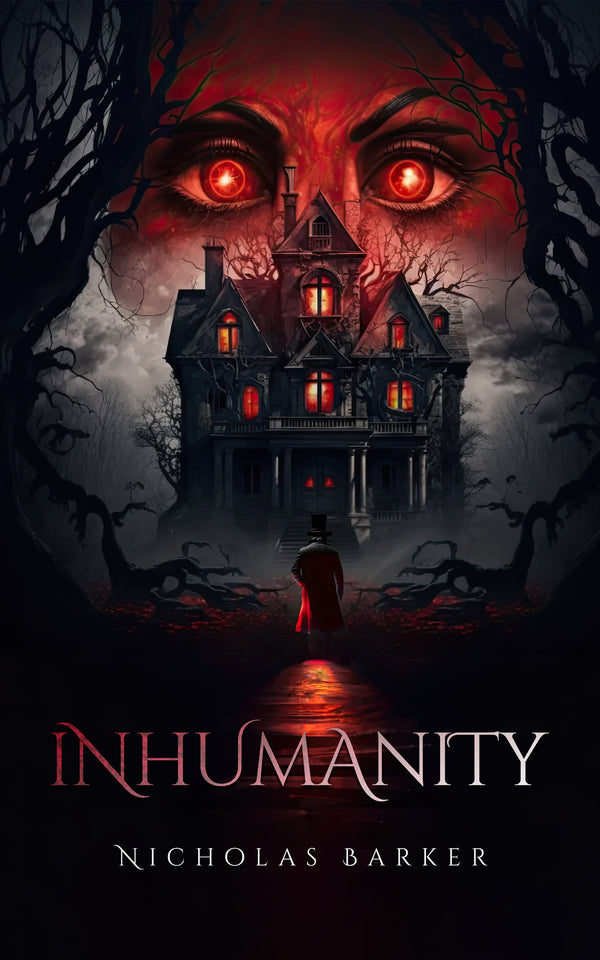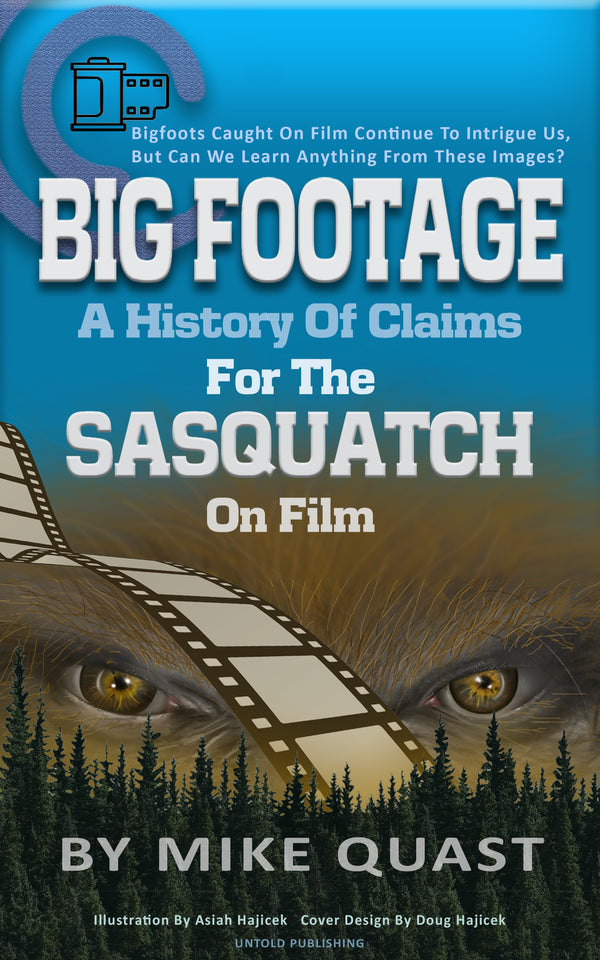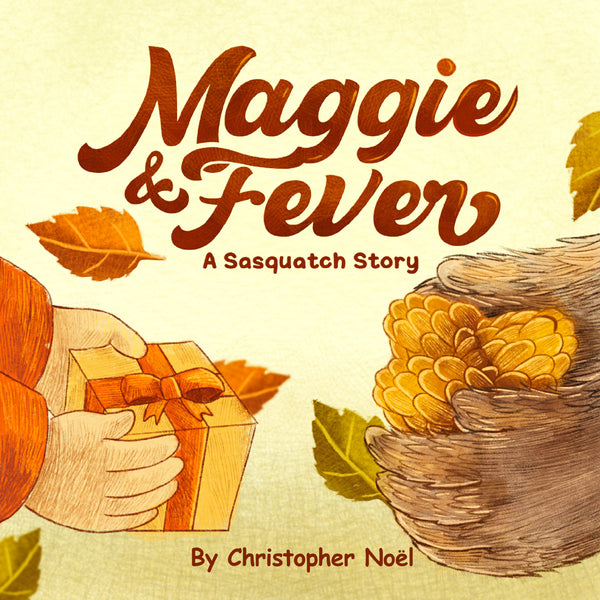Haunting Howls in the Heartland: The Ozark Howler

By Jack Sullivan, Bigfoot Researcher
The mournful howl pierces the stillness of the night, its chilling cry echoing through the ancient forests and rugged valleys. This haunting sound has long been woven into the folklore of the Ozarks, a vast mountainous region spanning southern Missouri, northern Arkansas, and corners of Oklahoma and Kansas. It is the call of a mysterious creature known as the Ozark Howler, a legendary beast that has captivated imaginations for generations. As a long-time enthusiast of cryptozoology and the unexplained, I have always been drawn to tales of this elusive creature said to prowl the remote wilderness of the Ozarks. What is the Ozark Howler and does it truly exist?
This question has lured me into the heart of Howler country, determined to uncover the secrets behind this cryptid that straddles the line between myth and reality. In my hands, I hold accounts both old and new - stories passed down through generations, documented sightings, hoaxes, and scientific theories. It is time to delve into the world of the Ozark Howler and unravel the mystery of this American legend.
The Legend of the Ozark Howler
The Ozark Howler goes by many names throughout the Ozarks, including the Ozark Black Howler, Nightshade Bear, Hoo Hoo, and Devil Cat. But by any name, this creature has a terrifying reputation. Descriptions portray it as a large, bear-sized beast covered in shaggy black or dark-colored fur. It is often depicted with prominent horns or antlers protruding from its head and eyes that glow like fiery embers in the night. But the Howler's most defining feature is its chilling vocalization - a haunting, unearthly howl that is said to resemble a blend of a wolf's lonely cry, an elk's bugling call, and even a human scream. Some claim it can be heard for miles across the rugged landscape, freezing the blood of any person or animal within earshot.
The origins of the Ozark Howler legend can be traced back through generations of folklore in the region. Some tales suggest the creature is a guardian spirit of the wilderness, meant to ward off those who would do it harm. Others depict it as a sinister entity to be avoided at all costs. Native American traditions contained stories of strange beasts in the forests, leading some to propose that the roots of the Howler may reach back to those indigenous legends. When European settlers arrived in the 1800s, they brought their own superstitions of spectral black dogs and hellhounds that could have merged with existing traditions. The result is a regional legend that has thrived in the remote hills and hollers where the Howler is said to roam.
Over the years, there have been numerous reported sightings of the Ozark Howler. The earliest documented encounter is attributed to none other than the famed frontiersman Daniel Boone, who allegedly shot and killed a creature matching the Howler's description during his explorations of Missouri in the early 1800s. Since then, the mysterious beast has been spotted by generations of Ozark hunters, hikers, and campers. But descriptions vary widely - from a feline predator to a hulking bear-like beast to something unidentifiable. And the environment likely plays a role. The dense forests, rocky bluffs, and shadowy hollows of the Ozarks could easily give rise to misidentifications or imaginations running wild. But for those who claim to have heard the Howler's bone-chilling call or glimpsed its hulking form, the legend remains all too real.
Theories and Speculations
The cryptozoological community remains divided as to what the Ozark Howler truly is. Some propose it may be an undiscovered species of large cat, potentially a melanistic cougar or jaguarundi that evolved isolated in the Ozarks. Others suggest it could be a relic population of primitive North American lions that persisted in the remote highlands. More radical theories speculate the Howler might be a surviving Ice Age predator like the scimitar-toothed cat or a new type of wolf-cat hybrid. Of course, mainstream science does not recognize the existence of the Ozark Howler at all. Skeptics argue it is simply a combination of folklore, superstition, and misidentified animals.
I have spent many late nights researching these varying perspectives, looking for common ground between the worldviews of folklorists, cryptozoologists, and conventional scientists. There are certainly some creatures that could be mistaken for the Howler - black bears are prevalent in the Ozarks and prone to rear up on two legs, creating a somewhat humanoid silhouette. Bobcats, coyotes, and even elk could conceivably be misconstrued as something more mysterious, especially amid the disorienting effects of echoes in the mountains. Some alleged sightings are almost certainly hoaxes or tall tales spun around campfires. But for those who claim to have come face-to-face with the true Ozark Howler, dismissing their accounts outright risks losing valuable insights, however improbable they may seem. The truth, I suspect, lies somewhere in the gray areas between fact and fiction.
Cultural Impact and Legacy
Regardless of its physical reality, the legacy of the Ozark Howler endures. It has inspired regional authors like K.W. Peery to capture the creature in poetry. The Howler has been featured in books, TV shows, and documentaries examining American folklore and monsters. Even businesses capitalize on the creature's infamy, branding local beers and beef jerky with the Howler name and image. To many, the Howler symbolizes the unknown that still lurks in the forgotten corners of America's wilderness, reminding us that nature holds secrets yet to be unlocked.
Some argue that the Howler represents the freedom and defiance of the Ozarks - a remote region historically populated by rugged individualists that lies firmly between the cultural spheres of the American South and West. Others say the Howler is a warning, keeping outsiders from despoiling the pristine wilderness. And for the tourists who traverse the scenic byways hoping to catch a glimpse of the elusive beast, the Howler is a source of excitement and a connection to the rich folklore of the land. Whether real or imagined, the Ozark Howler has become an enduring symbol of the mysteries that still dwell in the hills and hollers of this captivating American region.
Investigating the Howler
As a cryptozoology enthusiast, I am committed to investigating the Ozark Howler in a thoughtful, evidence-based manner. My research has taken me hiking through remote forests with audio recorders in hopes of capturing the Howler's cry. I have examined alleged Howler prints and kill sites looking for identifiable traces. Local historical societies have opened their archives to me, revealing decades-old journals and newspaper clippings recounting Howler encounters. And I have interviewed many witnesses first-hand, pressing them gently for details that could validate their experiences.
Studying cryptids like the Howler poses unique challenges. Physical evidence is scarce, often limited to ambiguous photos and prints open to interpretation. Eyewitness accounts are subjective and colored by expectations. But technological advances are expanding possibilities. Trail cameras are bringing new insights, as are DNA analysis techniques that could identify unknown hair or tissue samples. Acoustic monitoring and night vision technology could help capture the Howler in its natural habitat if it truly exists. As a researcher, maintaining an open yet critical mindset is essential. I strive to pursue multiple working theories on the Howler's identity while gathering concrete data that could provide breakthroughs. The truth may ultimately prove mundane or extraordinary. But the quest itself has intrinsic value.
Skepticism and Belief
In my years of Howler research, I have engaged with both ardent skeptics and true believers regarding the creature's existence. The skeptical perspective argues that without a type specimen or other hard evidence, the Howler remains pure conjecture. They see it as a cultural myth that has snowballed over time, kept alive by hoaxes and misinterpretations. They brand Howler believers as misguided at best. Yet those who claim to have encountered the Howler hold firmly to their convictions. They stand by detailed accounts of close-range sightings, frightening calls heard from darkened forests, and strange prints found after nights of bizarre activity.
As open-minded consideration is vital in cryptozoology, I strive to see value in both viewpoints. Healthy skepticism guards against sensationalism and jumping to hasty conclusions. But dismissing all eyewitness testimony out of hand risks throwing out data that could offer real insights into zoological mysteries. As researcher Benjamin Radford wrote regarding paranormal claims, "The question is not whether stories are true or false, but rather how and why they came to be told and believed." The key is finding the signal amid the noise - a challenging but rewarding endeavor.
Final Thoughts
The Ozark Howler remains one of cryptozoology's most captivating enigmas - a creature shrouded in a miasma of folklore, speculation, and debate over its very existence. For me, the Howler symbolizes nature's uncanny ability to harbor secrets and surprises. The Ozarks themselves are a region of sublime beauty, home to thriving ecosystems and stunning vistas. But they also hold their share of mysteries, from roaming mountain lions to unknown creatures that allegedly inhabit its plunging caverns. Even if the Howler exists only as a legend, it serves as a powerful reminder that our natural world is still wild at heart. There are discoveries yet to be made, stories yet to unfold. And I for one am glad to continue exploring the dark hollows and high ridges where the Ozark Howler's cry still echoes, beckoning the adventurous to venture forth and investigate. The answers are out there somewhere in the mist-shrouded hills. We need only have the courage to seek them. The Ozark Howler awaits.
From Bigfoot to UFOs: Hangar 1 Publishing Has You Covered!
Explore Untold Stories: Venture into the world of UFOs, cryptids, Bigfoot, and beyond. Every story is a journey into the extraordinary.
Immersive Book Technology: Experience real videos, sights, and sounds within our books. Its not just reading; its an adventure.


